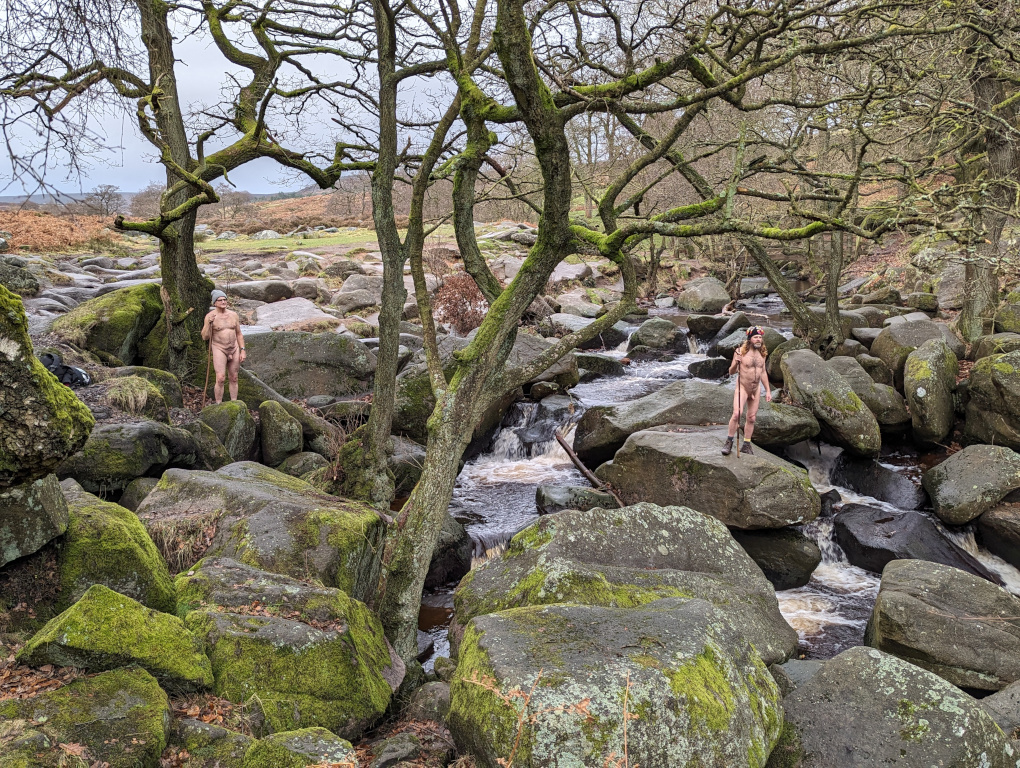I saw this interesting article published in the aftermath of a cull of mostly legitimate naturist images from Facebook a couple of weeks ago. I found myself disagreeing with some aspects of their argument, but it set me thinking (again) about the distinctions between different kinds of images involving nudity, and the use of those distinctions in relation to moderation.
I don’t think the article is “wrong” as such, and I absolutely agree with the message it is putting across. I just think it doesn’t go far enough and consequently could be seen as being subject to some of the same kinds of prejudice that it attempts to tackle.
Subjectivity
The article states as its key premise that “the distinction [between legitimate artistic and naturist expressions and genuinely explicit material] lies in the intent of the creator and the perception of the viewer“. (Here, the word “explicit” seems to be meant in a derogatory way rather than its correct meaning as the opposite of “implicit”.) I believe this is a highly questionable assertion, at least in the context of moderation by a third party, and will explore that in this article.
As an example in support of this view, the article also asserts that the exception often made by moderators for “legitimate artistic” images is abused by some users, who exploit this exception to post content that “borders on explicit material”. Whilst this may be true, the example they give is a Facebook account called naughty padosan posting “a constant stream of imagery that is clearly intended to appeal to those with salacious interests“, and I have to say I am not convinced by the example. On looking at that account, I find none of the images in any way offensive, and the article even says that they mostly are artistic. Perhaps the author of the article knows something about the person running “naughty padosan” of which I am not aware, but I have absolutely no way of knowing what the intent of that person is.
Further than that, I don’t think the intent of the person posting is even relevant to the decision on whether some content is considered bad or not. The content exists and should be assessed on its own merits. If there was some harm done to someone in the creation of the content, then it certainly might be in the public interest to investigate that but, other than that, I think the intent of the poster is irrelevant.
As far as the perception of the viewer is concerned, that is completely subjective. As I said in an earlier article: to a foot fetishist, pictures of naked feet could be considered sexually arousing. Does that make pictures of naked feet pornographic? Would it be pornographic in a case where the intention of the person posting the images of naked feet was to cause a foot fetishist to become sexually aroused?
Incidentally, I saw this image posted in a Facebook group:

It wasn’t taken down by Meta, despite the detail at the left end and purpose for which the item was clearly created.
I don’t believe in all that religious stuff but I think it’s worth looking at the words of Pope John Paul II, who had a very wise view on morality. In his book “Love and Responsibility”, he makes the case very clearly that the only sin involved in nudity is the sin in the mind of the observer. (He also points out, by the way, that if humans are made in the image of God, and God is perfect, then there can be nothing obscene about the naked human body.)
So, it is impossible to define objectively what constitutes a salacious or inappropriate image; it is entirely about how the viewer perceives it and nothing else.
“naturist and artistic nude images”
It seems strange that these two tend to be treated as one single group of things in discussions about moderation. I think naturist images and artistic nude images as classifications are a long way apart. Although it is possible for an image to be in both of these categories at the same time, the only thing the categories themselves share in common is that the people might have no clothes on.
In much nude art, the body is actually the main focus of the image (or sculpture). Indeed, in some celebrated nude art the act of sexual intercourse, and in some cases even rape or sexual assault, is the very subject of the work, as in Bernini’s sculptural masterpiece shown below.

(Image: Joaquim Alves Gaspar, used under Creative Commons licence.)
This is very different from most images that would be considered “naturist”, in which the subject of the image is of some scene or activity and the nudity is merely incidental; in which the person just happens to be not wearing clothes.
I actually think a good first test to apply to oneself in deciding whether to post an image is whether I think that image would still be worth posting if I (or anyone else) were wearing clothes. I say “first test” because there are images in which the very objective is to contribute to normalizing nudity, such as the one shown below (although, if we must classify it, it could also be considered artistic):

I actually think that is a really good photograph (taken by my wife), but it would most certainly be taken down by Meta if I posted it on Facebook, and my account would be restricted for some period. How ridiculous is that?
In the case of portraits, of which this could also be considered one, the main subject of the image is of course the person(s) whose portrait(s) is(are) being photographed, but it is irrelevant whether they happen to have no clothes on.
In some cases, the purpose of the image may even be to capture and celebrate the sheer joy of being out in the natural world unfettered by clothing (which could also fit this image). However, that is still quite different from images of sexual acts or even sexual violence, which seem to be allowed if the work is deemed to be “artistic”.
Opinions vs Facts
In the previous article I wrote about Bluesky’s (or rather the AT protocol’s) labelling approach, which at least provides the possibility for the decision on what should be censored to rest with the viewer. In there, I asserted that there are three kinds of label that could be attached to a post or image:
a label could be expressing, for example:
- some factual assertion about a post, such as whether an erect penis is clearly visible in the image, or
- some assertion about a post that is actually just a matter of opinion, such as “adultOnly”, or
- some action that should be taken by the app regarding a post, such as “hide” or “warn”.
Given the degree of subjectivity in the determination of what should or should not be hidden, I think the only kind of label that should apply is the factual kind. Even then, it could be a matter of opinion in some cases – e.g. how many pixels constitute a penis? – but at least the subjectivity is reduced. Beyond that, it should be up to the user (or the person with a legitimate responsibility for a vulnerable user or minor) to decide what is filtered out of the posts that they see.
To apply moderation based on attributes or classifications that are just a matter of opinion is the height of arrogance. We really need moderation to be taken out of the hands of these companies like Meta. Perhaps it should be only the legal system in the viewer’s location that applies – at least there can be an element of democracy then.
One reply on “On the futility of (nude) image classification.”
Thoughtful & interesting, to me the distinction lies with is it pornograhy, in other words are the photo’s of sexual acts and is there any violence/coercion invoved (and i realise that can be difficult to prove/disprove. But we are up against an american companywho are trying to preempt the next governments actions. Which will be do as i say not as i do! The world and particularly the media are in a bad place at the present time in my opinion, or am i just an old liberal?